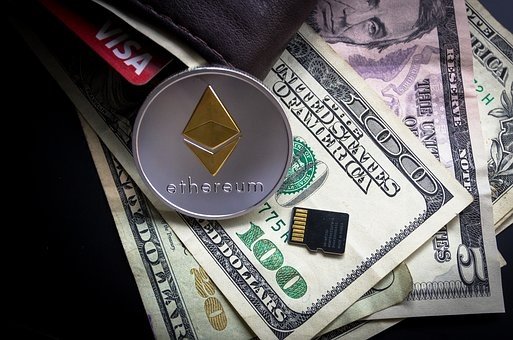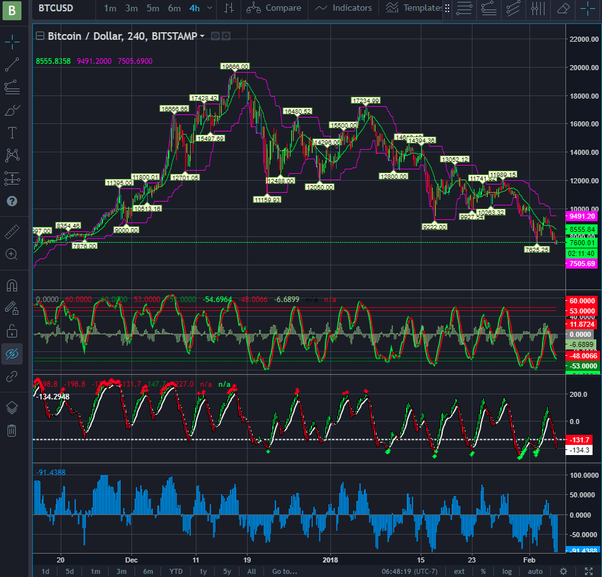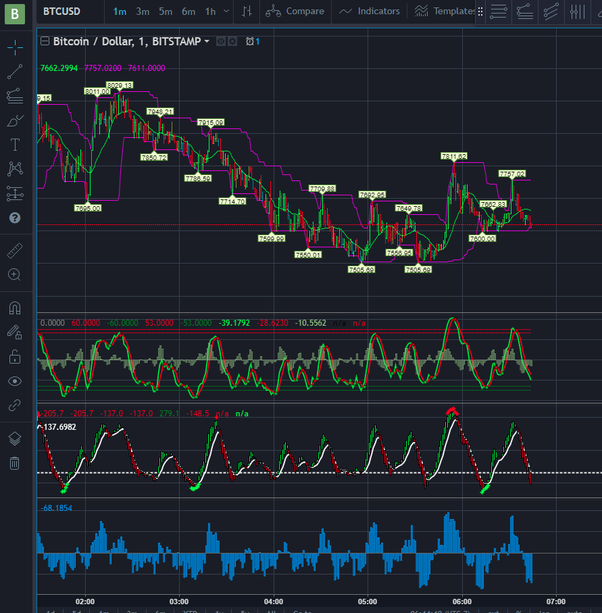Why Is Bitcoin Such A Unstable Currency
Those who invested 750 USD each in the 8 largest cryptocurrencies of the time in January 2017 (total investment 6,000 USD) were in June 2017 by a staggering 125,000 USD richer than before. Here, every investor should be aware that massive profit-taking is taking place in the market.
A successful investment also requires a suitable and logical investment strategy. Given four-digit growth rates, this can of course also be called "disbursing", waiting or reinvesting. However, the overall market capitalisation shows very clearly that not only a large amount of capital flows into the cryptocurrency market, but is also withdrawn. Profit-taking is a normal process on the financial market.
Panic of amateur investors
Buy Bitcoin, invest Bitcoin, trade Ethereum etc. Since the rapid price increase in 2017, a broad media interest in cryptographic currencies has been established. As a result, many "amateur investors" also wanted to participate in these price gains and still want to do so. Encouraged by forecasts such as "Bitcoin can be worth €50,000 by the end of the year" or "Ethereum ist das neue Bitcoin", a lot of money was invested without the necessary background knowledge about the technology (block chain) or the financial market. Ultimately, they were hoping for further price gains in the three-digit range.
But when prices start to fall, which is quite normal and you can observe this process on the world's stock markets on a daily basis, then comes the fear of losing money. In the worst case, the Bitcoins and the Ethereum are sold again with loss to avoid an alleged total loss. This panic reaction then also triggers an increased sales volume on the market and prices continue to fall.
I do not want to say anything against smaller investors. However, you can see from the collapse of prices and the panic selling that many small investors are on the market without knowledge and patience. This ignorance is mercilessly exploited by large speculators. Those who let themselves be guided only by their greed for quick profits and invest in Bitcoin and Ethereum without any sense or understanding will most likely lose their money.
Professional investors and traders
Wherever there are high growth rates, large investors and professional traders operating for example Ethereum Trading are not far away. After all, the already considerable price changes can be further exploited with various levers and margin trading. With a total market capitalization of e. g. Ethereum 18 billion USD, 2 billion active trading volume is already sufficient to influence the price in one direction.
2 billion now sounds like a lot, which it certainly is, but for an investment company it is not. Here it is possible to calculate exactly how much is bought or sold, or to control it via trading bots.
For example, a bot can be programmed to repeatedly buy a certain amount of Ethereum in a certain time interval. (All 60 seconds the Bot buys 100 ETH around the clock. That would be 1,440 x 100 ETH = 144,000 ETH per day = 28.8 million USD per day | 864 million USD per month. For example, the market could be led to believe that the price is rising steadily over a period of 1 month and the price is rising, as more investors are buying later in the hope that the price will continue to rise.
Any market that can be easily influenced attracts bitcoin traders and speculators, as you could see at the first bitcoin hype. But after the rapid increase, however, there was also the rapid collapse when the profits were realized and the capital was withdrawn from the market.
The so-called Pump & Dump scheme can be seen, especially with smaller cryptocurrencies. Here a smaller coin with low volume is pushed until it shows two or three-digit growth rates (pump). Now the speculator waits until he finds a few "fools" and enters the highest price. Then landslides are sold (dumped) and often still bet on falling prices in parallel. The speculator earns double, the small investor looks into the pipe.
The price movements of Bitcoin (and other crypto/digital currencies) are not that different than most or many other commodities and currencies. Prices are changing constantly. They are moving up OR down…all the time.
One aspect to consider is “what is the time interval you are looking at?” For instance, over the past week (1st week of Feb 2018) the price of BTC started at approximately $10.1k moved down to $7.6, up to $9.5 and this morning is sitting in the $7.8k range. The “time interval” is an important consideration. Inside of each of these intervals, looking at price moves in smaller time windows like 1-minute and 5-minutes, reveal even more fluctuation in price movements.
In this trading chart below which I captured from this morning, you can see an example of the price movements based on the 1-minute interval.
This chart (below) is a market snapshot from late 2017. Note that the price this morning is nearly the same as the price the week of Thanksgiving (2017).
Prices move up and down; constantly.
If you are thinking about investing, the best advice is to commit to owning the asset, first. Then, make a plan to invest an amount (say $10K). Next, pick a time interval to buy into the asset and purchase a percentage of your capital at the price point of BTC on the day you establish as your buy day.
For example, make a $10k commitment and invest $1k a week for 10 weeks. Over a two and half month window (time interval), your “holding cost” or “basis” would be the average of prices over that two month period. Looking at the second chart above, if you started your investment program in November 2017, without doing the exact calculation, it appears your average cost of owning BTC would be approximately $10,000 (plus or minus $1,000). Yes, the market price today means your cost is higher than today's price...but prices are constantly changing. If this is an asset you want to hold long term, then you are in the market. But most importantly, you did not buy at the highest price nor did you time it perfectly and buy at the lowest price. But rather you will have a basis of the average of prices over that time period. It’s called “dollar cost” averaging in some investment strategy theories.
Timing the market is not a well thought out strategy. Why? You can’t. No one knows the future so in reality, you will not know if you are buying at the lowest point or the highest point.
To eliminate “market timing risk”, invest over a period time versus all at once.
Have a fabulous trading day! (or spread investment month…or two!)
Great article, the problem many of us who bought very low got greedy, did not sell at the top.
Excellent post! I believe institutional investors ran the price up and took the small mom and pop investors money during the rise and fall early this year.